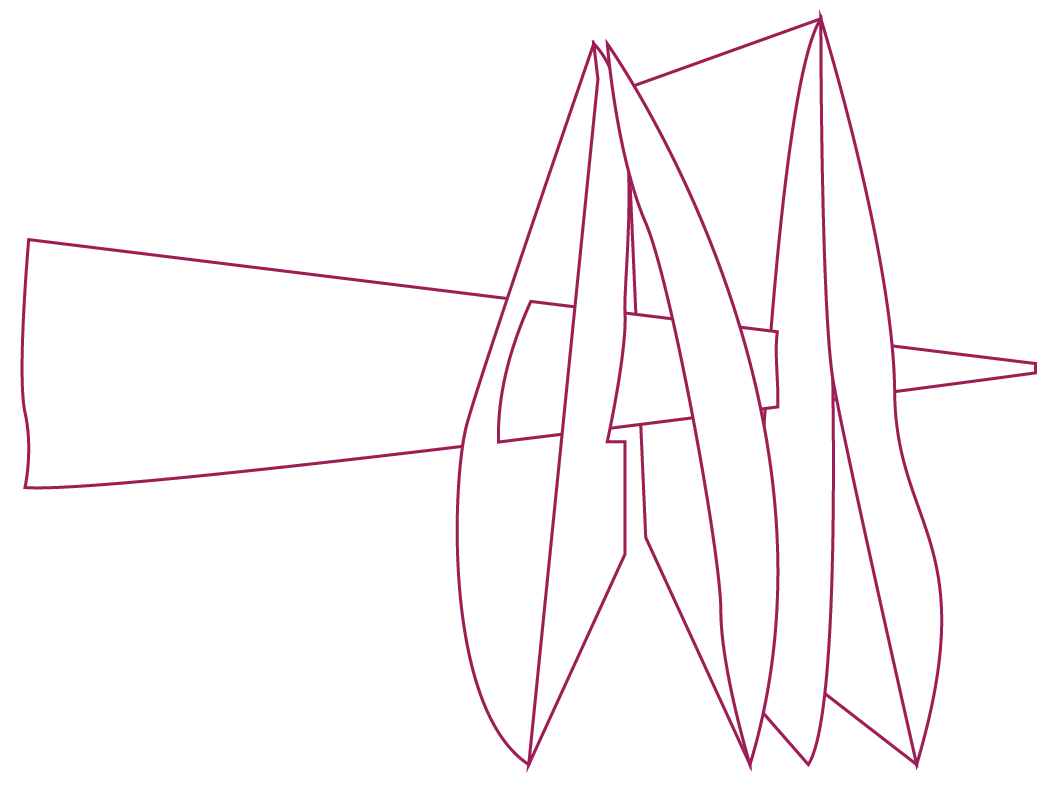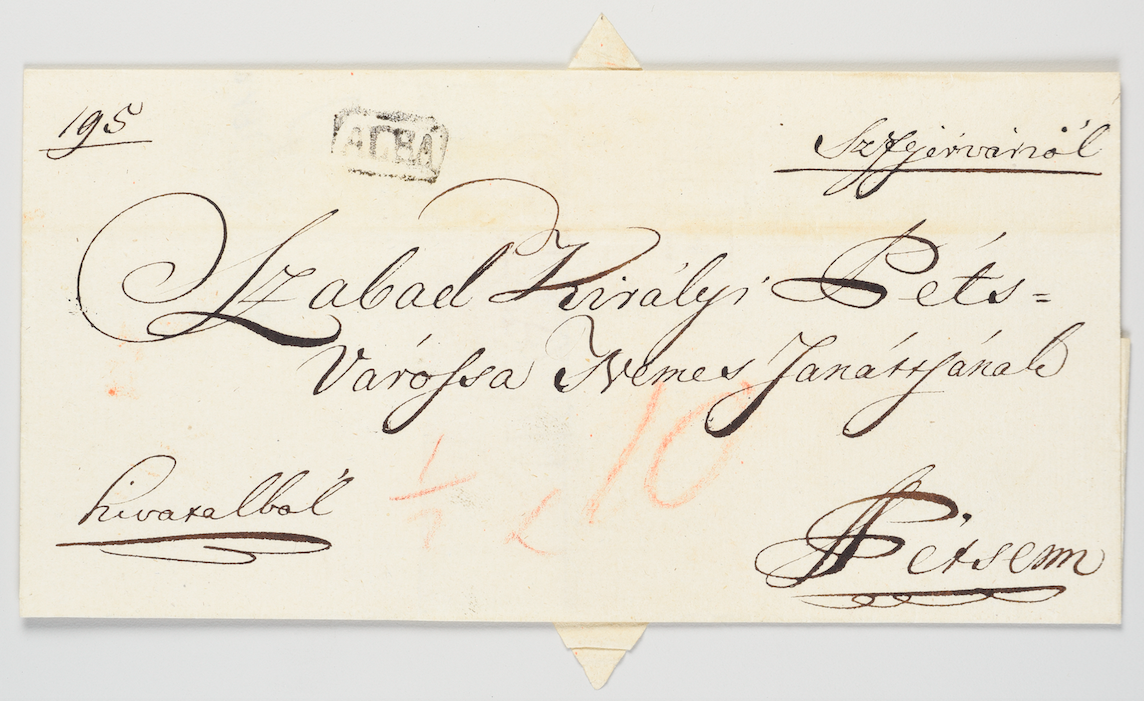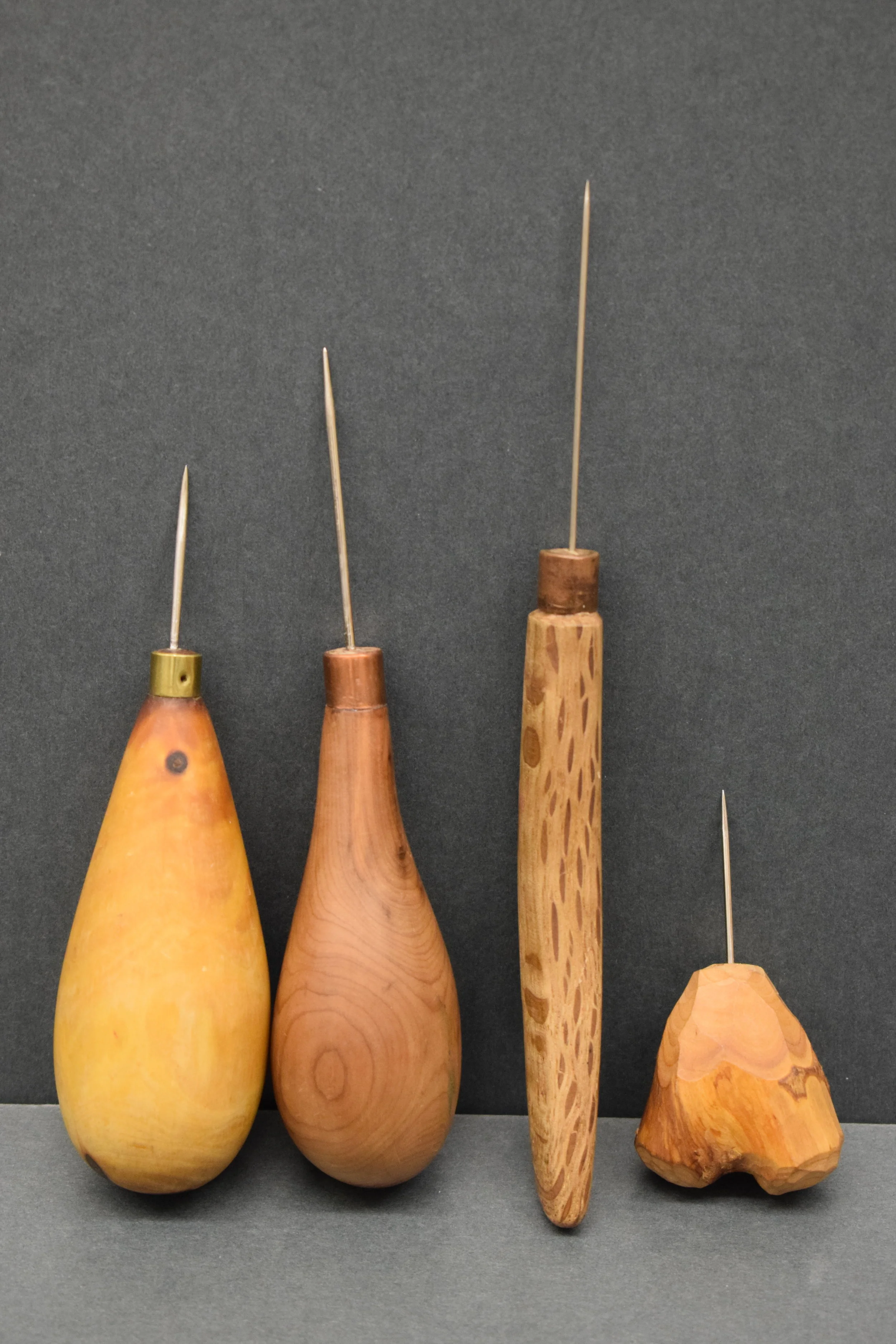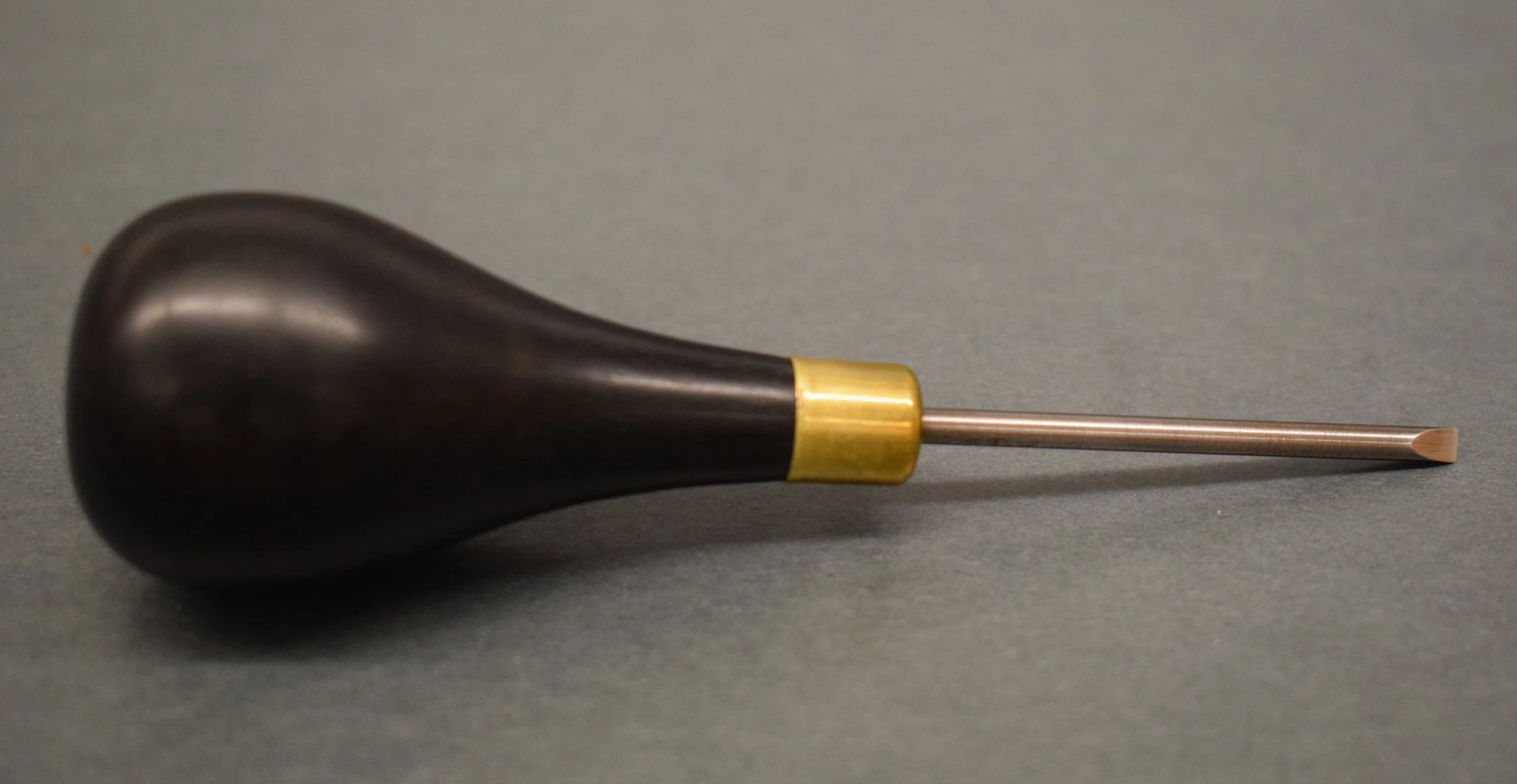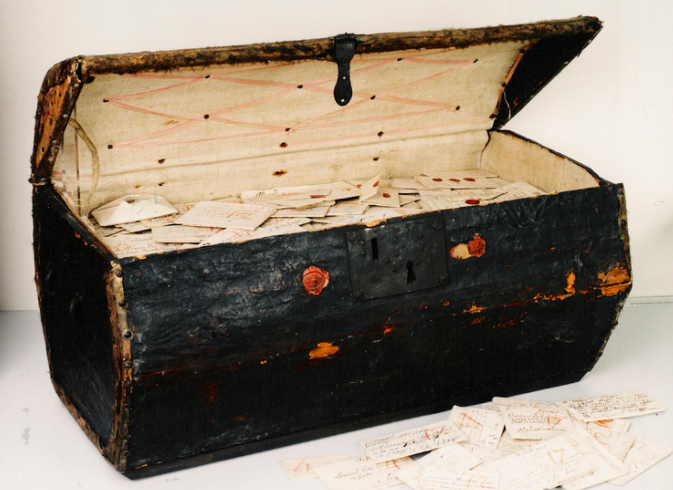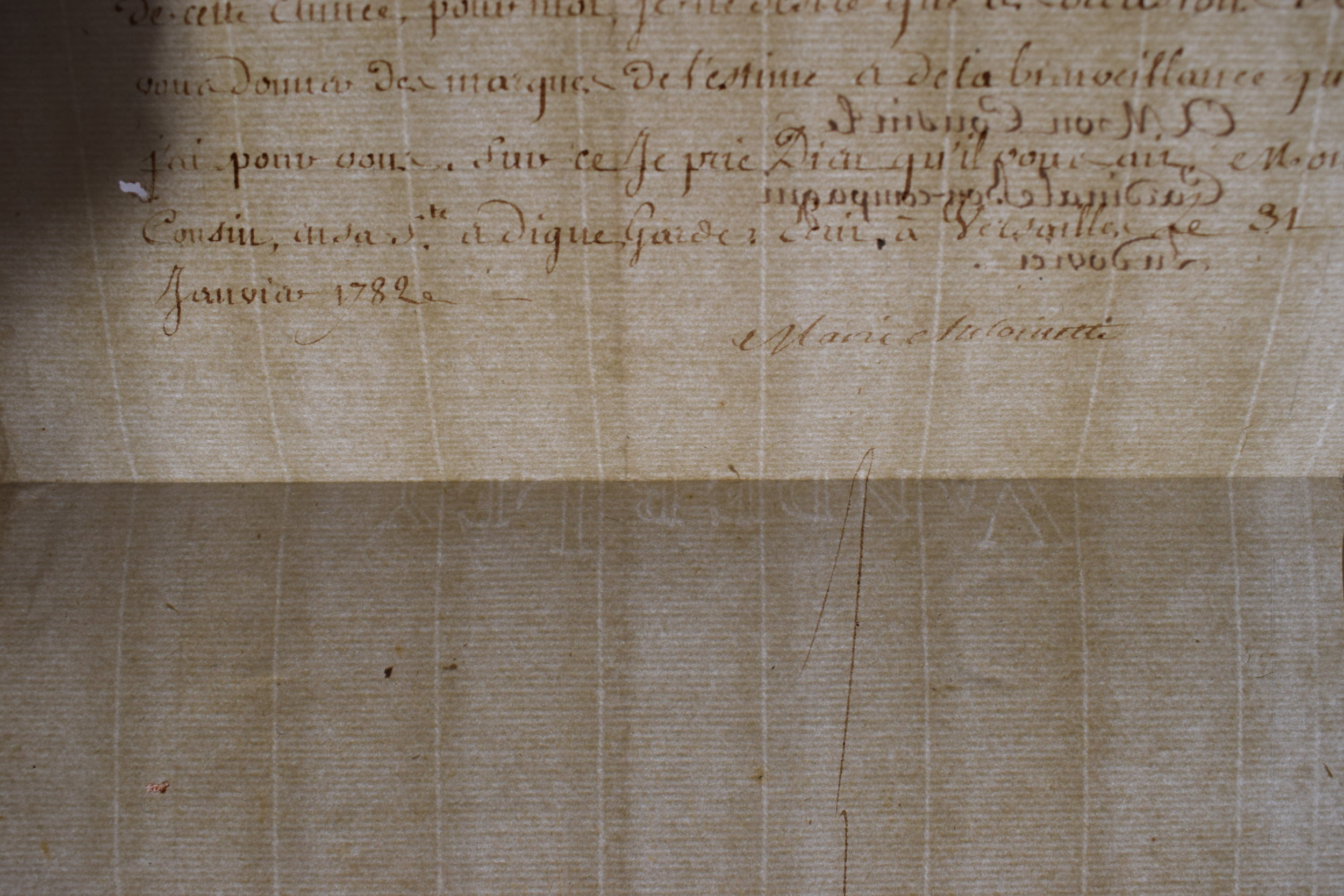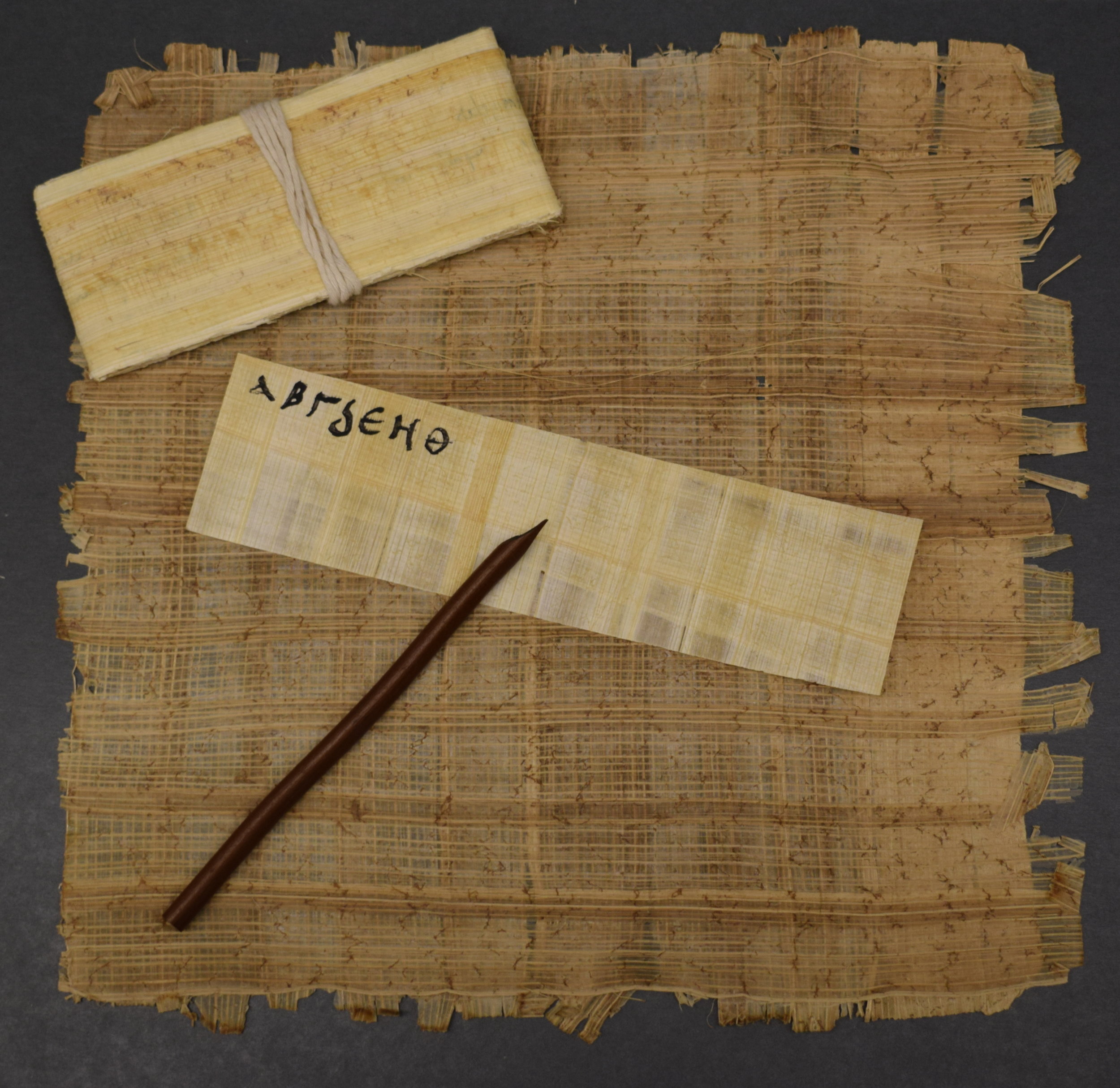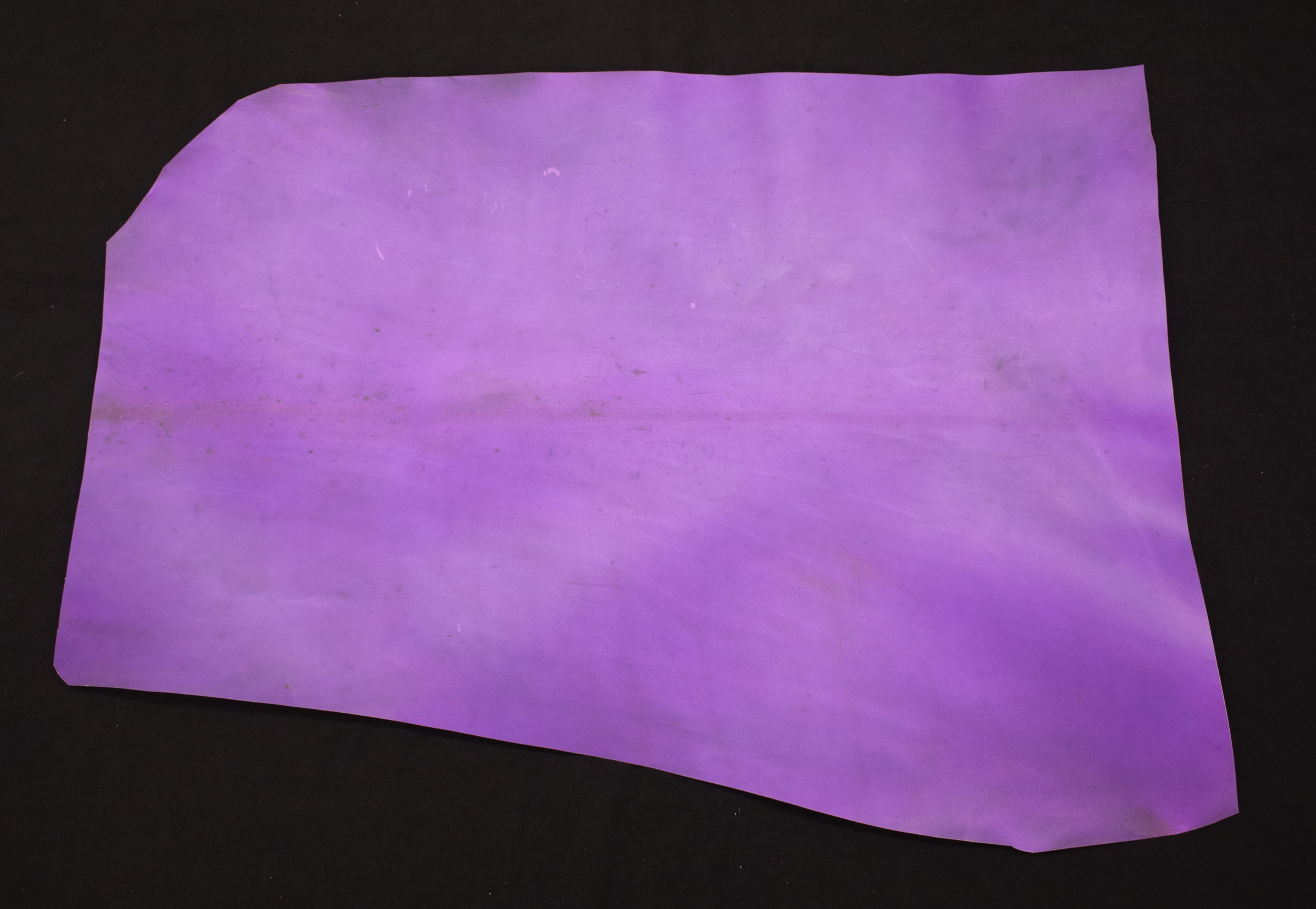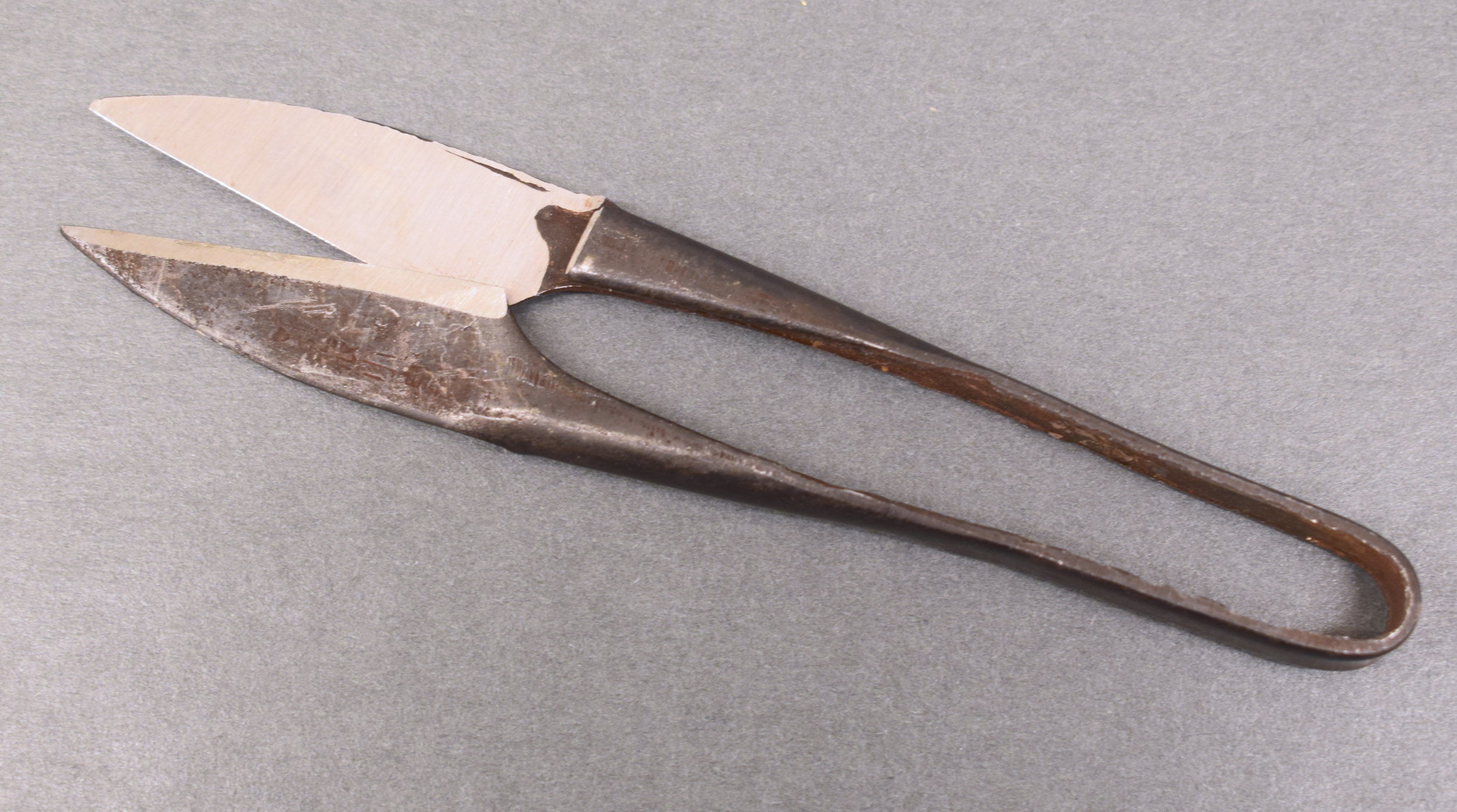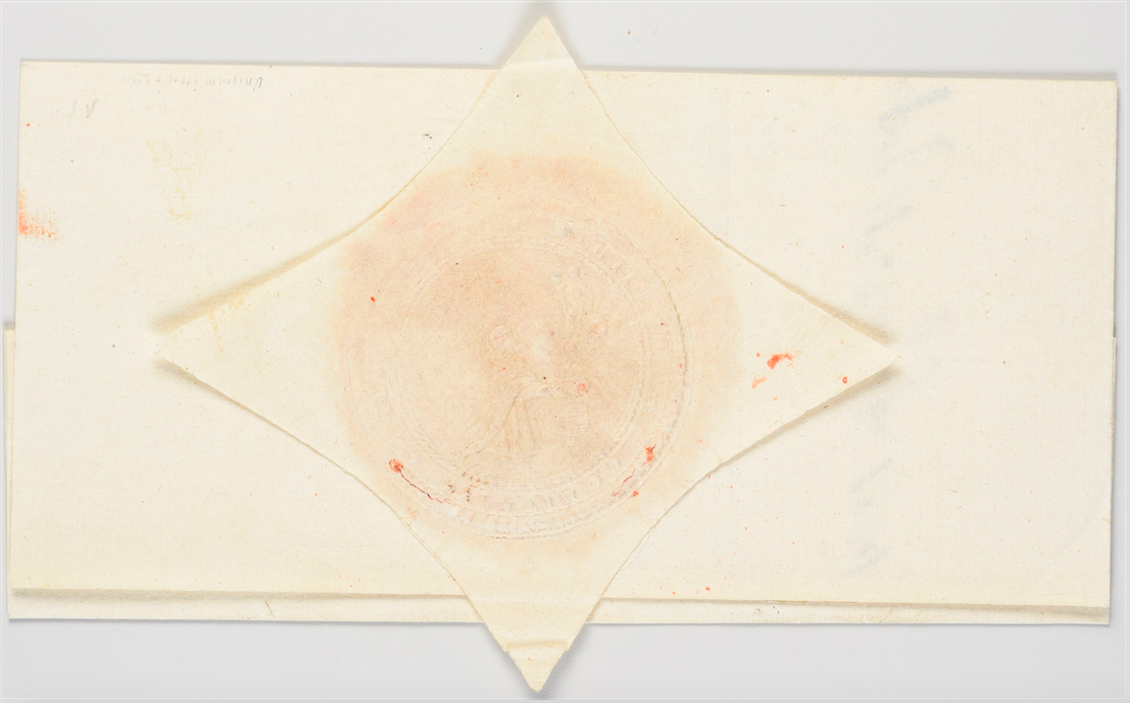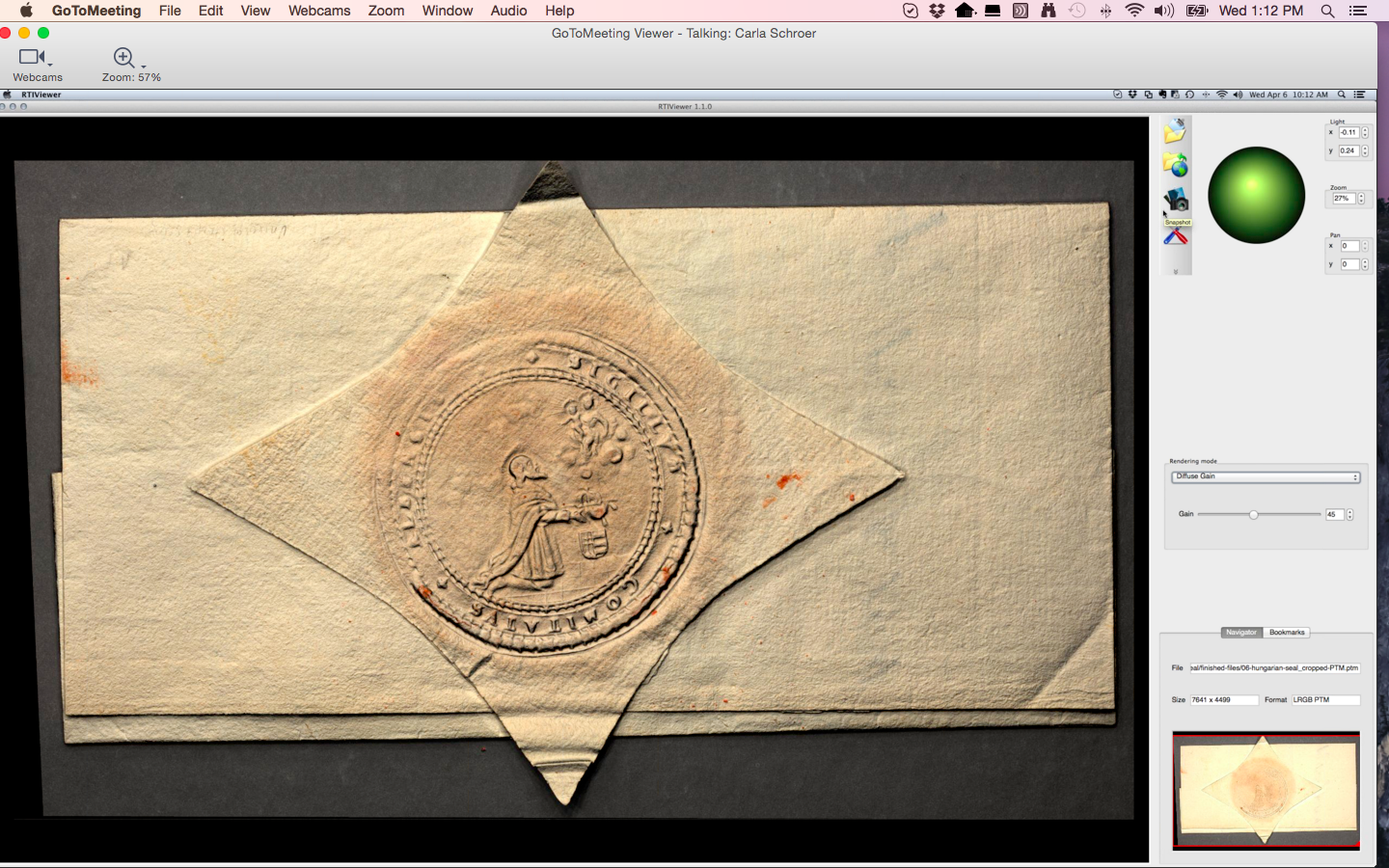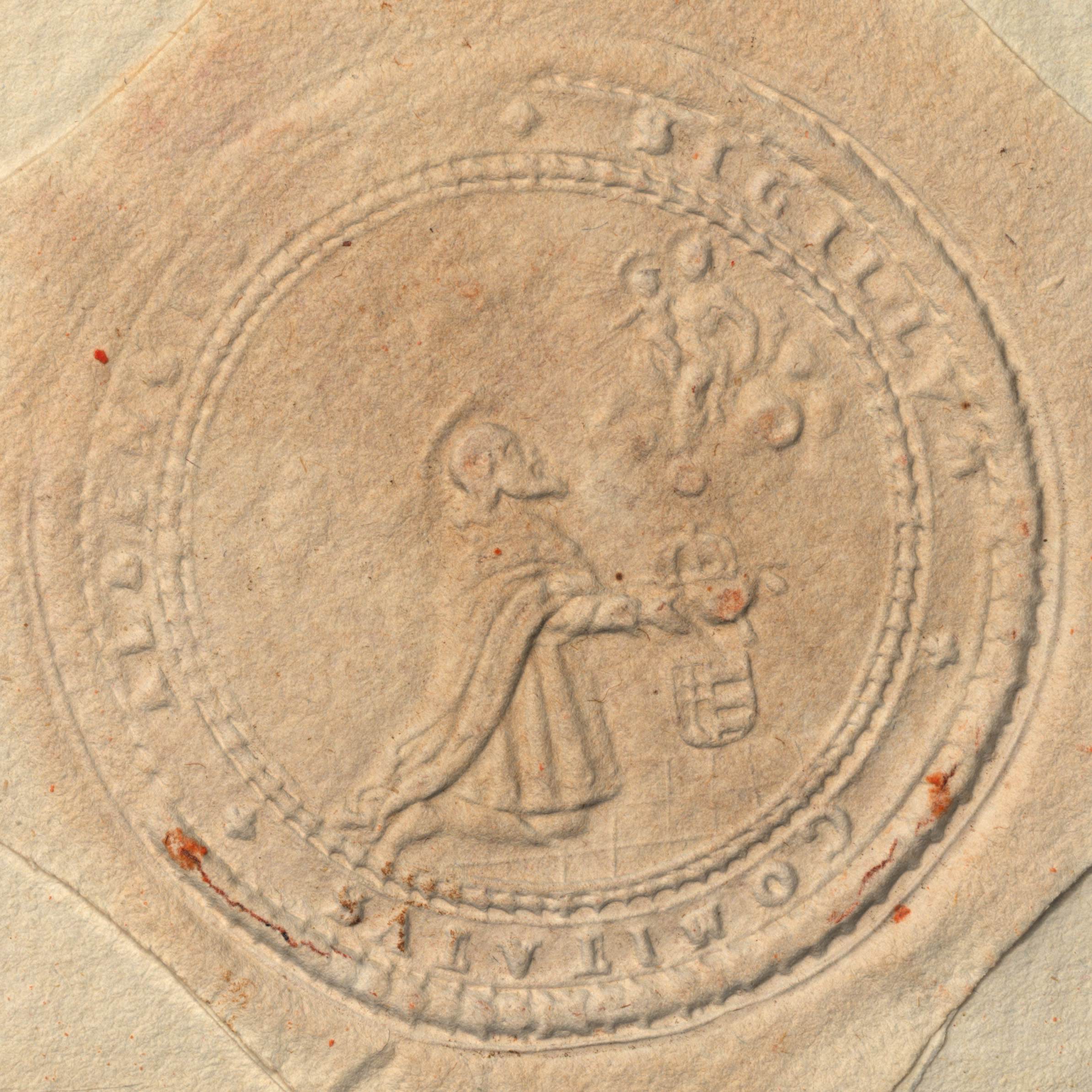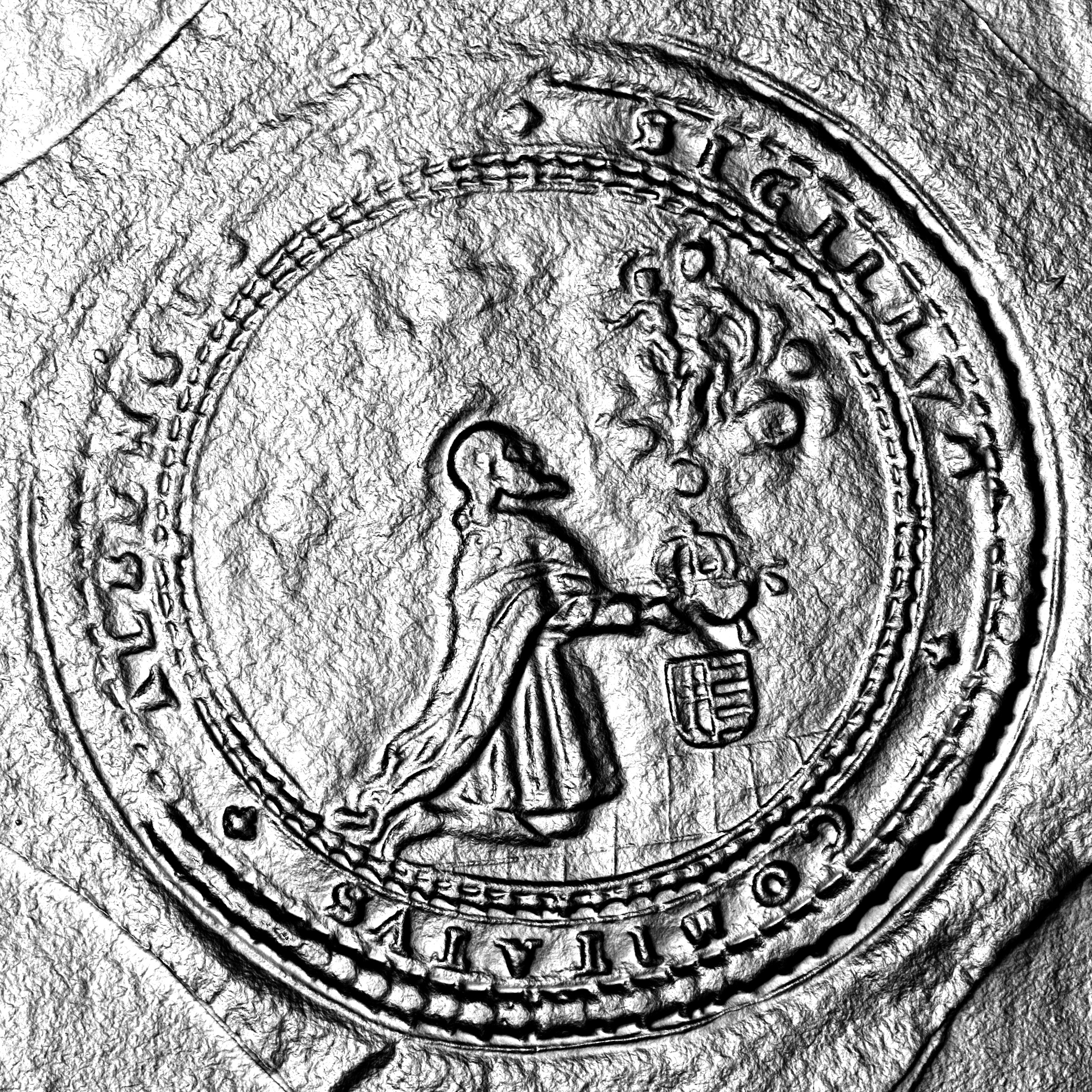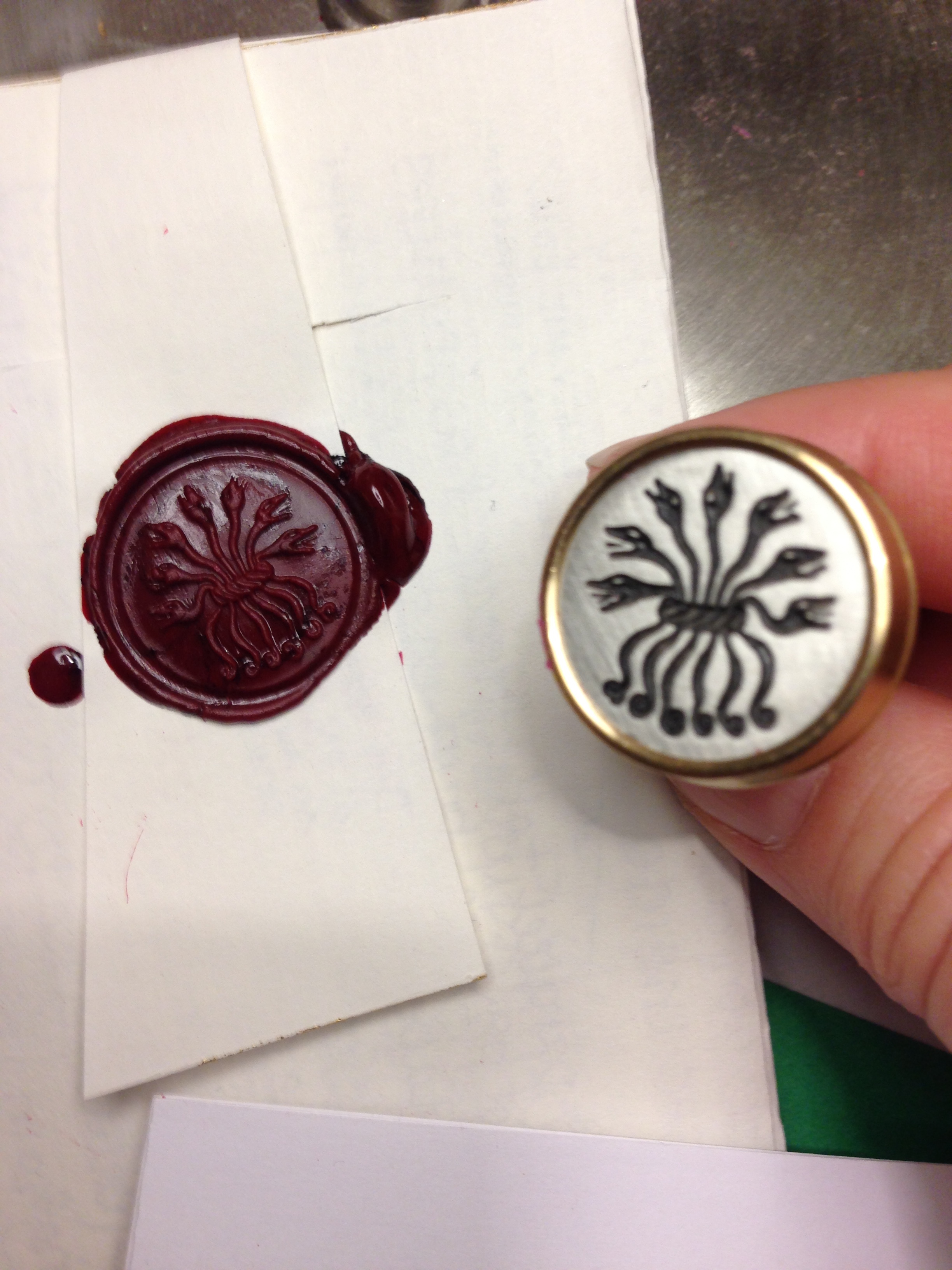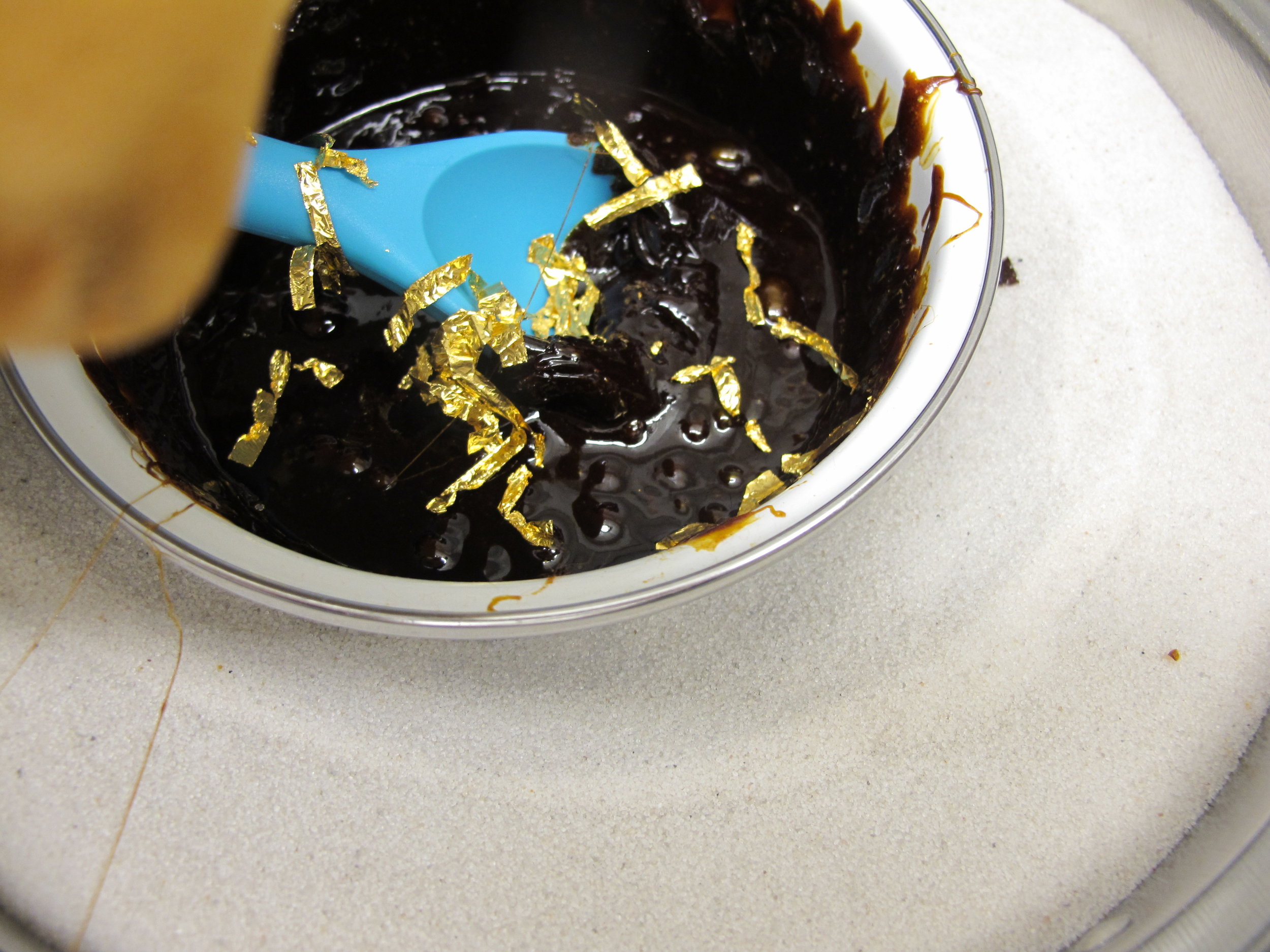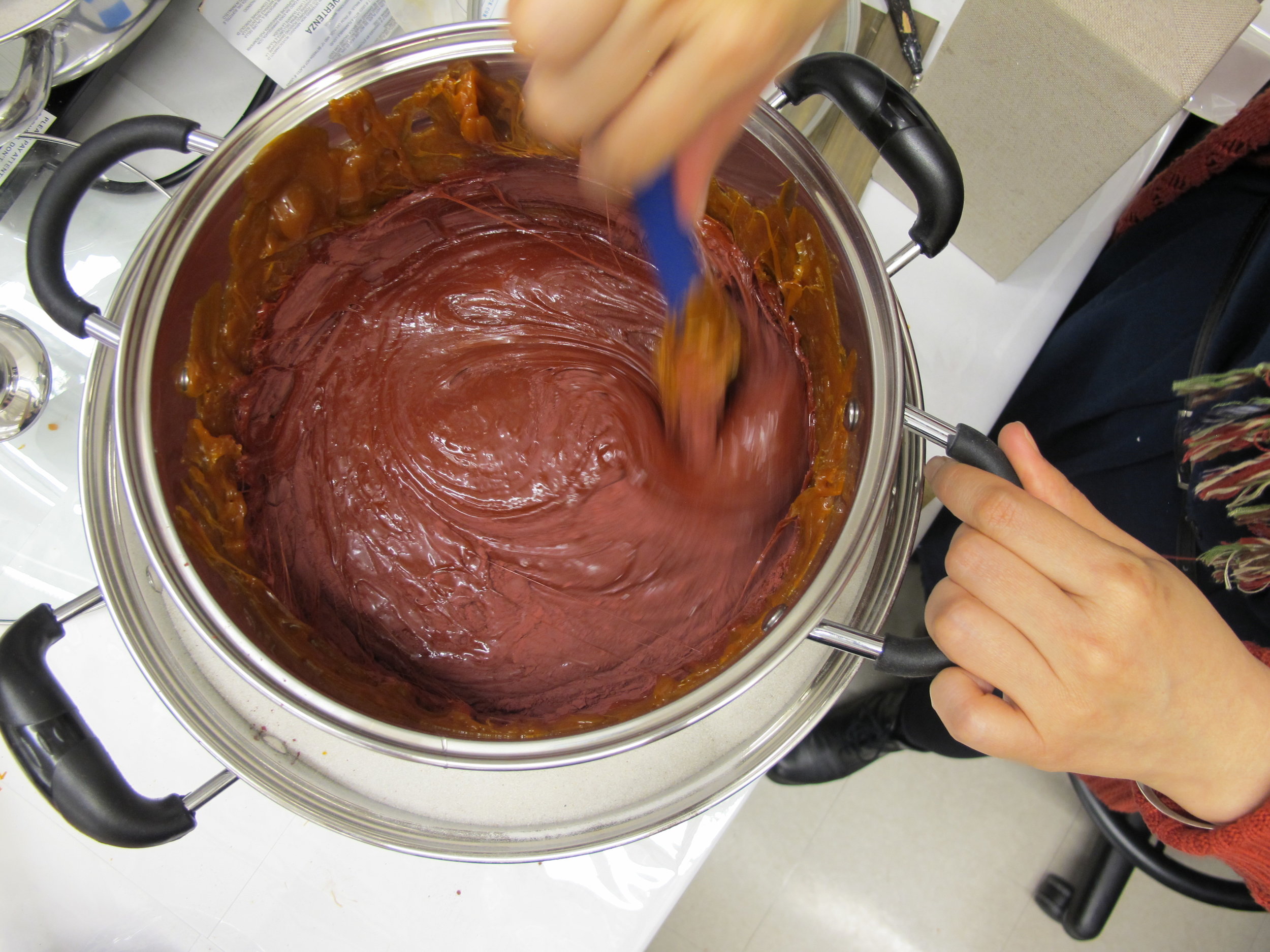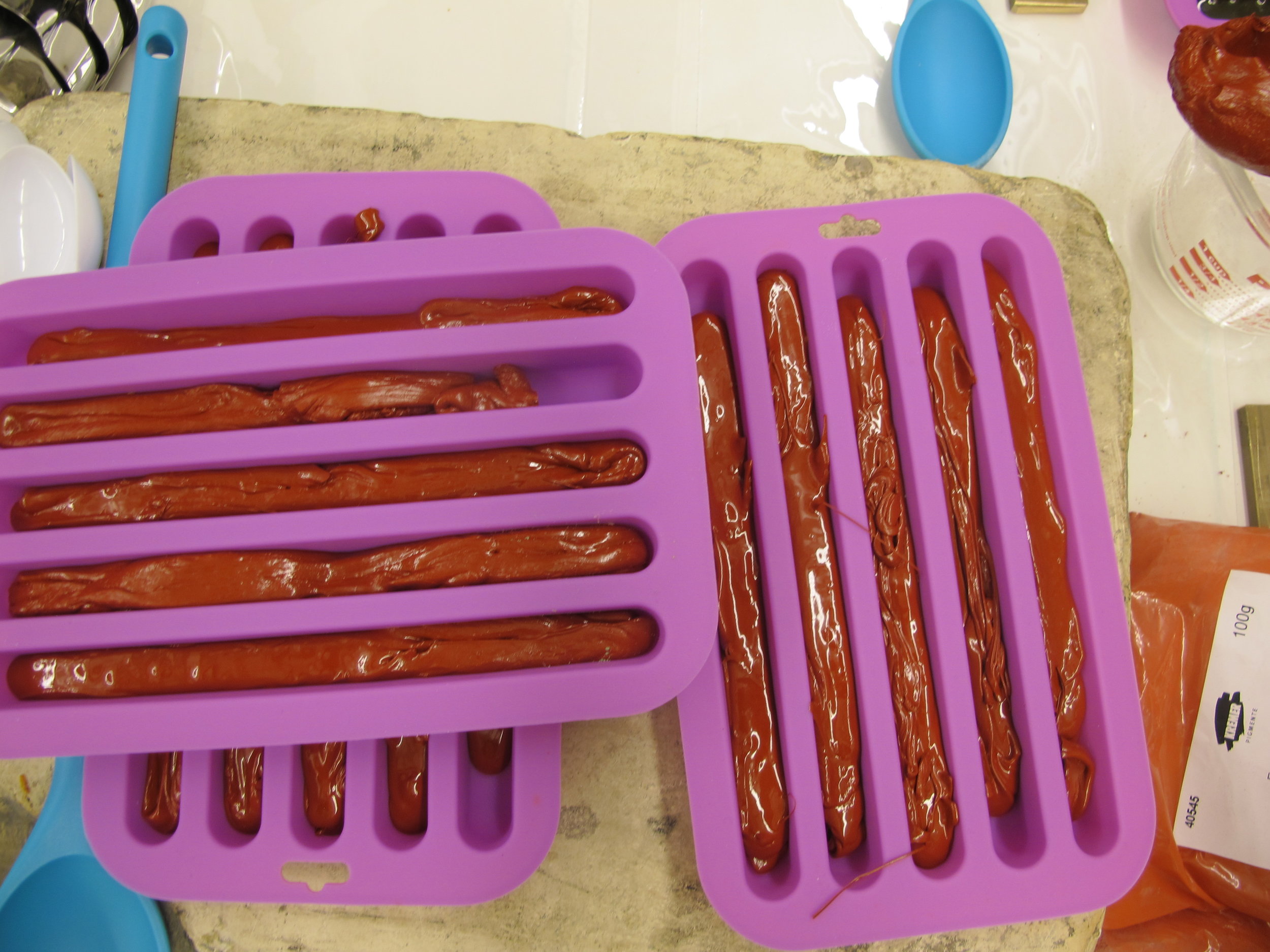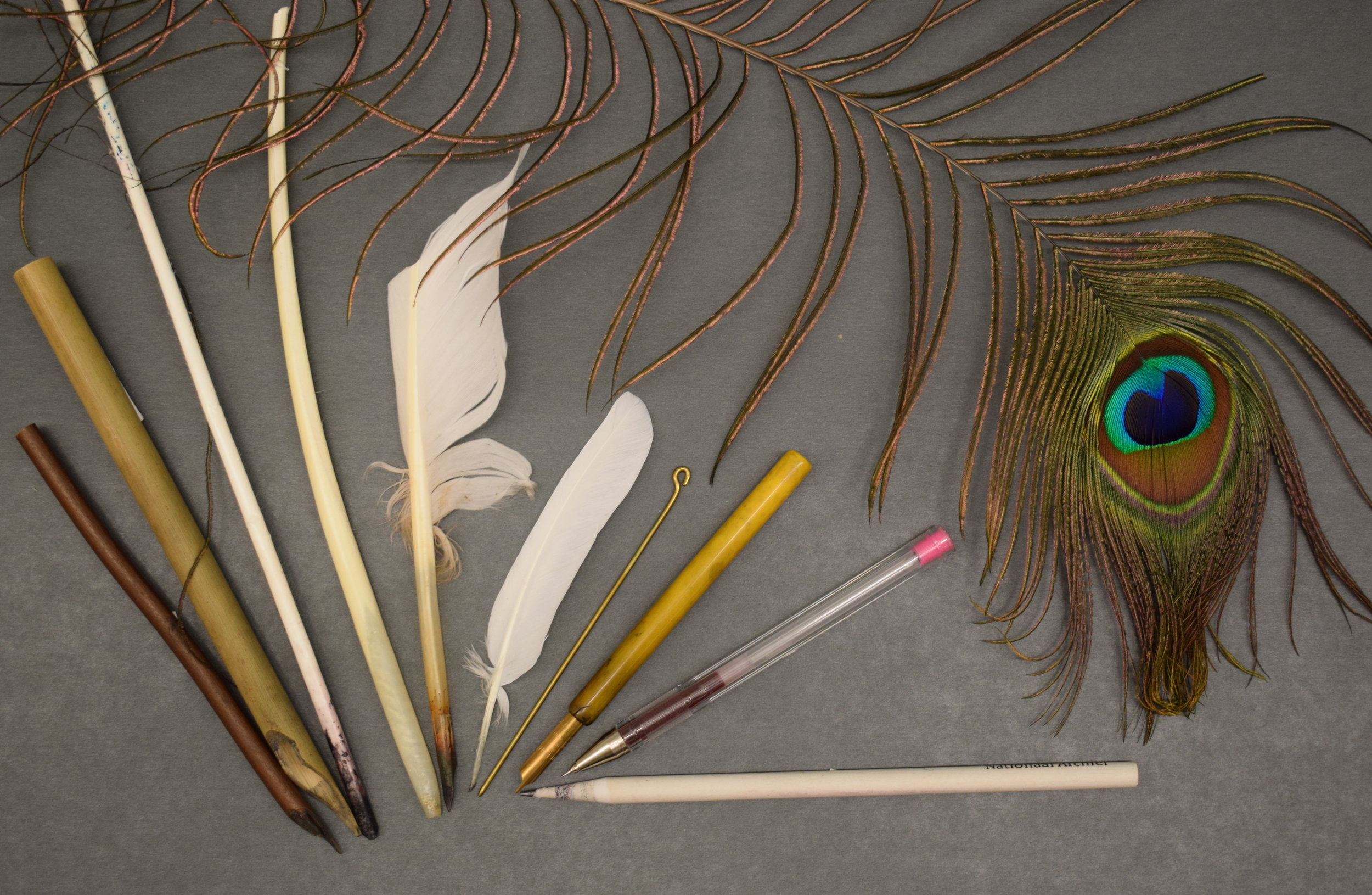Check back here to witness our comprehensive glossary grow to include the more than 700 letterlocking terms. Here are over one hundred terms as a preview! Many of the galleries include links to instructional videos. Go ahead and click on them.
Cite as: Jana Dambrogio, Daniel Starza Smith, and the Unlocking History Research Group. 2023. Dictionary of Letterlocking (DoLL). Last updated: 4 December 2023. Date accessed: [Date]. Abbreviated on this page: (DoLL 2023). All images except when noted are courtesy of the Unlocking History Materials Collection.
Concepts
3-D Micro-tomography, time delay integration, computed
Courtesy of The Microtomography Group at Queen Mary University of London. A video showing the layers of a high contrast TDI CT (Time Delay Integration, computed micro-tomography) test scan of a bundle of 20 locked letters. Using historic letterlocking formats, iron gall ink, quill, and sealing wax , the #Signed,Sealed, & Undelivered team made up the batch of new letters for testing, writing secret messages inside, folding them using historic letterlocking formats, and sealing them with wax. The Unlocking History team and their collaborators are developing the technology to virtually reveal the contents and folding patterns without tearing open the letters
A
Accordion fold
A method of folding in which a series of repeating mountain and valley folds alternate to resemble the bellows of an accordion. Also called a zig-zag fold or concertina fold; a Z fold is the simplest kind of accordion fold. On the opened letter, the panels created by the accordion fold may or may not be equal in width. Click here to learn about folds, creases, and wrinkles.
Actual destination
The location or place of a letter after delivery, whether or not it was the intended destination.
Address
The particulars of the location where a person or organization can be contacted by post. Before the invention of the envelope, the address was typically inscribed on the outside of the folded letter packet itself, or on a wrapper. Addresses on locked letters can therefore often be found on the reverse of the letter after it has been unfolded. Address details may consist of a street name, the name of a town or district, or a local landmark. Before the eighteenth century, buildings did not typically have street numbers, and postal codes were not introduced until the twentieth century. (OED, Beal, DoLL 2016)
Image of William Barton Roger's letter to his father is courtesy of the MIT Libraries, Department of Distinctive Collections, William Barton Rogers Collection, MC 1. Folder 4. December 5, 1826.
Adhesive
A substance used to stick materials together; applied to prevent or inhibit the opening of a letter or other document, or to bear an authentication device, e.g. sealing wax or starch wafer.
Adhesives (e.g. seals and wafers) are used in letterlocking as a means of securing a letter shut. They are usually applied to two overlapping sections of the substrate, affixing them together. Common adhesives include beeswax, shellac, and other resins; plant starches; gelatins; and pressure-sensitive or heat-sensitive synthetic materials. Clay and mud are used similarly in earlier examples of document security. Adhesives constitute one of the most important, and frequently the most obvious, structural and security devices in letterlocking, since their adhesion must be intentionally broken if the letter is to be opened. They interact closely with folds, stabs, and other kinds of intentional damage in the letterlocking process. (DoLL 2016)
American Institute for Conservation of Historic and Artistic Works (AIC)
“The American Institute for Conservation of Historic & Artistic Works (AIC) is the [United States’] national membership organization supporting conservation professionals in preserving cultural heritage by establishing and upholding professional standards, promoting research and publications, providing educational opportunities, and fostering the exchange of knowledge among conservators, allied professionals, and the public.” (AIC)
Awl
A narrow cylindrical blade with a sharp point, used to pierce through a letterpacket.
B
Bifolium, -a
A writing substrate folded to make two conjugate leaves.
Bifolium, (Parts of)
Bottom edge
See Folio, (parts of) and Bifolium, (parts of).
Bradawl
An awl with at least one flat or beveled side.
Break/break up
Used extensively in the early modern period to refer to the opening of letters and wax seals. It is not always clear whether writers are referring to the breaking of the seal or paper (OED, “break”, v. 2a), or of the letter more generally (OED, “break,” v. 10. trans.).
Q Achilles in Shakespeare’s Troilus and Cressida (c.1602): “Here is a letter from Queen Hecuba ... I will not break it” (5.1.38–41)
Q Leontes in Shakespeare’s Winter’s Tale (1611): “Breake vp the Seales” (3.2.140)
Q Michel de Montaigne, Essays, trans. John Florio: “being on the instance of curiositie, and on the greedie and insatiate passion of newes, which with such indiscreet impatience, and impatient indiscretion, induceth vs to neglect all things, for to entertaine a new-come guest, and forget all respect and countenance, wheresoever we be, suddainly to break-vp such letters as are brought- vs” (Montaigne, 1613: 201)
Q John Reynolds, The triumphs of Gods revenge: “wherefore with more speed then affection, and with more haste then charity, they likewise breake up the seales of her Letter” (Reynolds, 1635: 431)
Brienne Collection
A collection of undelivered letters from 1689 to 1706, originally gathered at the post office of Simon and Marie de Brienne in The Hague. The collection comprises 3148 cataloged items, including 2571 opened letters and 577 unopened packets, and is now housed at Sound and Vision, The Hague.
Image courtesy of Sound and Vision The Hague
C
Category, Letterlocking Visit the categories page here.
Conservation
The practice of preserving artifacts or natural materials.
Letterlocking sprang from discoveries made by Jana Dambrogio while she was pursuing a conservation fellowship in the Vatican Apostolic Archives, between 2000 and 2001. The study of letterlocking is rooted in the conservation philosophy that locked letters should be cared for with as little intervention as possible. Though conservation is often associated with “repair,” letterlocking serves as a reminder that holes and tears in a substrate may have been placed intentionally, are referred to as manipulations, and should be studied and preserved as they are found.
Corner fold Click here to learn about folds, creases, and wrinkles.
Crease The impression left in a substrate by a fold. Click here to learn about folds, creases, and wrinkles.
Crease assignment Click here to learn about folds, creases, and wrinkles.
Crease pattern Click here to learn about folds, creases, and wrinkles.
D
Destination
The location or place to which a letter is sent and/or where it is received by its intended recipient.
Diagonal fold Click here to learn about folds, creases, and wrinkles.
Digital surrogate
A digital replica of a historical artifact, which allows its content to be accessed while minimizing handling of the original.
Document security
The practice of employing precautions to protect the contents of a document from unwanted inspection, modification, recording, transmission, destruction, or other intervention.
VP See our video playlist “Spies and Secrets” for examples of document security that exist outside letterlocking.
Draft
A manifestation of a letter in which the content is preserved, but there is no material evidence of transmission.
E
Edge (component boundary)
A boundary of any component of a locked letter, for example a paper lock or wax seal.
Edge (gathered material boundary)
A boundary of a substrate that has been gathered with other substrates or materials, and is oriented in relation to those materials, e.g. spine edge or fore-edge.
Edge (letterpacket boundary)
A boundary of a letterpacket. The number of edges coupled with the orientation of the address defines a letterpacket’s format.
Edge (substrate boundary)
A boundary of a substrate, such as a flat or folded sheet of paper.
Endorsement
An inscription or annotation written on the back (the “dorse”) of a letter or other document.
Endorsement (postage)
Instructions concerning delivery of a letter, found on the docket or wrapper.
Envelope
Epistolary
“Chiefly literary. Of or relating to letters or letter-writing.” (OED)
F
Floss (textile)
A soft thread, usually silk or cotton.
Folio
A single leaf of paper or parchment.
Folio, (Parts of)
Fold
The bending of a substrate over itself. A fold usually leaves a mountain crease or valley crease in the substrate. One of the principal manipulations of letterlocking, and the most commonly encountered.
More than thirty different folding terms are currently distinguished in DoLL:
Accordion fold
C fold
Catch fold
Corner fold
Closed gate fold
Crosswise fold
Diagonal fold
Directional fold
Dog-ear
Double gatefold
Double parallel fold
Edge fold
Flattened fold
French fold
Gate fold
Hamburger fold
Hotdog fold
Independent folding
Lengthwise fold
Long edge to long edge
Margin fold
Penguin head fold
Pushed-in fold
Roll fold
Short edge to short edge
Signature box fold
Tandem fold
Triangle folding
Tri-fold
Z fold
Zig-zag fold
Click here to learn about folds, creases, and wrinkles.
Folding long-edge-to-long-edge Click here to learn about folds, creases, and wrinkles.
Folding short-edge-to-short-edge Click here to learn about folds, creases, and wrinkles.
Fore-edge (bifolium feature)
The edge of a bifolium or codex that is opposite the central fold. In bound material, the edge opposite the spine.
G
Gatefold and closed gatefold Click here to learn about folds, creases, and wrinkles.
Giveaway locked letter model
A folded and secured model handed out to encourage engagement with letterlocking in a tangible and memorable way. These models usually imitate historic letters; they often include information about the packet’s locking style and the subject of letterlocking.
Gutter edge
See bifolium, parts of
H
Handling instructions
Directions for the delivery of a letter, written on the letterpacket. These might include names of individuals involved in a delivery, or stages of a route the letter will take.
High security score (2)
A security score assigned to a letterpacket in which a lock-S travels through one or more slits, and must be cut or torn to access the contents. Describes categories 17-64.
I
Independent folding
A method of folding in which two or more leaves of substrate lying on top of one another are folded separately and in a different manner from one another. When unfolded, the crease patterns on each leaf will differ. Independent folding is often seen on the two leaves of a conjugate bifolium.
Click here to watch a video showing independent folding.
Information security
The practice of defending information from unwanted inspection, modification, recording, transmission, destruction, or other intervention. Information security encompasses letterlocking and document security, but also takes into account non-tangible communication methods, such as whispering or email encryption.
Ink
Iron Gall Ink
Gall Invisible Ink
Artichoke Invisible Ink
Alum Invisible Ink
L
Letterlocking
Letterlocking (process)
The act of folding and securing an epistolary writing substrate (such as papyrus, parchment, or paper) to function as its envelope or sending device. As distinct from the use of a wrapper or gummed envelope, and from paper-folding traditions such as origami.
Letterlocking (historical activity)
A sub-category of a 10,000-year-long document security tradition, pertaining to epistolary materials.
Letterlocking (subject of study)
The discipline which studies the materially engineered security and privacy of letters, both as a technology and a historically evolving tradition.
Letterlocking category (LC)
A classification system for opened letters defined by the presence of physical manipulations (fold/roll, slit/hole, tuck, adhesive, and lock) used to transform a writing substrate into a letterpacket. Category is used to assign security score to a letterpacket.
Visit the Categories page here.
Letterlocking format (LF)
A classification system for locked letterpackets defined by the number of edges on the silhouette of a letterpacket, and orientation relative to the address panel.
Letterlocking manipulation
A physical alteration performed on a writing substrate in order to turn it into a letterpacket and secure it shut. Manipulations include:
fold/roll
tuck
adhere
slit/hole
lock – further subdivided into lock-O, lock-SA, and lock-SU
Location
A site identifiable precisely with latitude and longitude, global positioning system (GPS) terms, or an address.
Low security score (1)
A security score assigned to a letterpacket which can be opened and closed without detection, even if adhesive was used in the locking process. Describes categories 5-8, 13-16, 29-32, 37-40, and 45-48.
M
Manifestation
“One of the different and particular ways in which a letter may exist.” (EMLO). One of the ways a reader experiences or encounters a letter: the original, opened or letterpacket model, digital image, a catalog entry, a demonstration video, etc.
The ways to experience or encounter a letter: the original, opened or letterpacket model, digital image, a catalog entry, a demonstration video, etc.
Manipulation
A deliberate physical alteration to a substrate or other artifact. Manipulations might be made to a substrate during the writing process (writing manipulation), to turn a substrate into a letterpacket (letterlocking manipulation), to facilitate a letter’s transit (postal manipulation), to file or display a document (storage manipulation), or to stabilize or repair an artifact (conservation manipulation).
Manuscript
Handwriting, or an artifact containing text written by hand.
Margin fold Click here to learn about folds, creases, and wrinkles.
Mountain fold Click here to learn about folds, creases, and wrinkles.
P
Paleography
The study of handwriting and the history of scripts.
Panel
A distinct flat section of a substrate, resulting from one or more folds.
Paper
A writing substrate made from plant fibers that have been pulped, soaked, sieved, matted together into a sheet, pressed, dried, and for the purposes of correspondence, sized. Paper has emerged as the principal material for letterlocking due to its resilience to manipulation and its economy of production.
This letter is modelled from the original letter found in the Archivio Boncompagni Ludovisi (Villa Aurora) courtesy of HSH Prince Nicolò Boncompagni Ludovisi and HSH Princess Rita Boncompagni Ludovisi, Archivio Boncompagni Ludovisi (Villa Aurora). Photo credits: Dr. T. Corey Brennan 2010. To learn more visit http://villaludovisi.org/
Papyrus
A writing substrate made from strips of the pith of the papyrus plant, which have been soaked, laid in an overlapping pattern, layered, pressed, and dried.
Parchment
A writing substrate made from the skin of an animal, usually a calf, sheep, or goat, that has been dehaired, dried, stretched, and smoothed.
Philately
"(a term coined in the 1860s) denotes the pursuit of postage stamp collecting and also the study of all physical characteristics of stamps, as well as related aspects of postal history and postal stationery, including postal marks, hand-stamps, labels, envelopes, postcards, etc.” (Beal)
Place
A site whose precise geographical location cannot be determined, e.g., a campsite, shop, or building that no longer exists and cannot be pinpointed exactly on a historical map.
Postage stamp
A notice of payment on the outside of a letterpacket, written by hand, stamped, or (more recently) signaled with an adhesive label.
Pressure-sensitive adhesive
Adhesives, often found on carriers, that do not require heat or moisture to activate their sticky properties.
Q
Quill
A writing implement made by shaping the cleaned tip of a feather.
See writing implements.
R
Reverse-engineering
The process of replicating the workings of an object based on detailed examination of and investigation into its construction, for example the folding sequence and locking mechanism of a historical letter.
Roll fold Click here to learn about folds, creases, and wrinkles.
Route
The journey taken by a letter from being dispatched to arriving at its destination.
Routing
The intended route for a letter to take, as signaled by stamps or manuscript marks on the letter.
Routing annotation
Text or marks on a letterpacket recording the locations or places a letter has passed through on its route.
Reflective Transformation Imaging, RTI
An imaging technique which lights an artifact’s surface from multiple directions, capturing the object’s shape and color exactly, and permitting interactive re-lighting of the final image.
S
Scissors
Two pivoted blades attached to handles; when closed on a substrate, the blades create a parallel shearing action resulting in a breach.
Scroll
A rolled document. Can also mean any kind of writing, particularly letters.
Seal
Seal (locking appendage)
An instance where the opening of a letter has been prevented or inhibited through the use of adhesive. Distinguished from lock, a material appendage to a letter, and adhesive, the substance applied to affix a letter shut.
Seal (metaphorical meaning)
Metaphorical meanings derived from the definitions above (e.g. “seal of approval,” “my lips are sealed”).
Seal-design (seal-stamp feature)
The design cut into the face of a seal-stamp, often incorporating an authentication and/or decorative device, such as a family crest.
Seal-impression (seal feature)
The impression left behind on the adhesive by the design on the seal-stamp, whether directly (exposed seal) or on paper laid over that adhesive (e.g. covered seal).
Seal-stamp
The device that impresses into an adhesive such as sealing wax. Can be referred to as seal-matrix, seal-die, seal-ring, signet, signet-ring, seal-stamp, or stamp. Can also include desk seals and fob seals.
Sealing wax
Images of the Unlocking History team's Brien Beidler teaching the rest of us how to make sealing wax from historic recipes. Have an old recipe? Send it to us here.
A colored, waxy adhesive that is softened or melted, and applied to a letter substrate as part of its closure system. May be impressed with a seal stamp to create an exposed seal, or overlaid with paper or another material to create a covered seal.
Wax dispenser
“Sealing-wax” and “wax” are often used interchangeably in the discussion of historical letters. “Sealing-wax” is the preferred term.
A low-temperature tool such as a glue-gun used for melting and applying sticks of adhesive labeled as waxes and faux sealing wax.
Secret writing techniques
Secret writing techniques include methods devised to communicate discreetly. Some of the videos in the above gallery showcase our collaborative work with Nadine Akkerman, Ph.D. Akkerman researches 17th-century female spies and their secret writing techniques. Other videos in this gallery show coded messages the Unlocking History team has found in locked letters.
Secure
To close a letter so that its contents are protected from observation, and from the elements, through the entirety of its transmission.
“Secure” does not necessarily imply a high security score; a letterpacket can be secured shut, yet still be easy to open and reclose.
Security score
A number (0 zero, 1 low, or 2 high) indicating both how difficult a packet is to open and how easily it could be opened and closed without detection. Security score is assigned based on how letterlocking manipulations interact to build the letterpacket’s locking mechanism.
Stationery
Products manufactured and sold for the purpose of writing and printing.
Substrate, Writing (Epistolary)
The material forming the writing surface of a letter. In letterlocking, it is the substrate that is manipulated, secured shut, and subsequently opened.
T
Top edge
See bifolium, parts of
Triangle fold Click here to learn about folds, creases, and wrinkles.
U
Undelivered (mail)
A letter that does not reach its intended recipient.
See Brienne Collection.
V
Valley fold Click here to learn about folds, creases, and wrinkles. (DoLL 2017)
W
Wafer, Starch
A thin, flat disc or sheet of dried adhesive, activated by moisture.
Watermark
A design visible in a sheet of paper when held up to the light, such as those created by contact with a wire pattern during the paper-making process.
Wax jack
A type of candle holder designed to allow sealing wax to be held easily over a flame.
Wrapper
A container, usually made of paper, formed to fit around items (e.g. letters, locked letters, enclosures), and then addressed and secured for delivery. The rest of the wrapper substrate remains blank.
Click here to watch a video showing a wrapper.
Wrinkle(s) Click here to learn about folds, creases, and wrinkles. (DoLL 2017)
Writing implements
“The apparatus, set of utensils, instruments, etc., employed in any trade, or in executing any piece of work. Now chiefly in agricultural implements, or as a synonym of ‘tools’; freq. a generic term for the tools, weapons, etc., used by prehistoric peoples, as flint implements. Also in sing.: a tool, instrument.” (OED, implements, n. 2.a.In pl.) (DoLL 2017)
Z
Zero security (0)
A security score assigned to a letterpacket in which access to contents is limited, but can be opened and closed very easily without detection. Describes letterlocking categories 1-4, 9-12, 17-20, 33-36, 41-44, 49-52, and 57-60.
